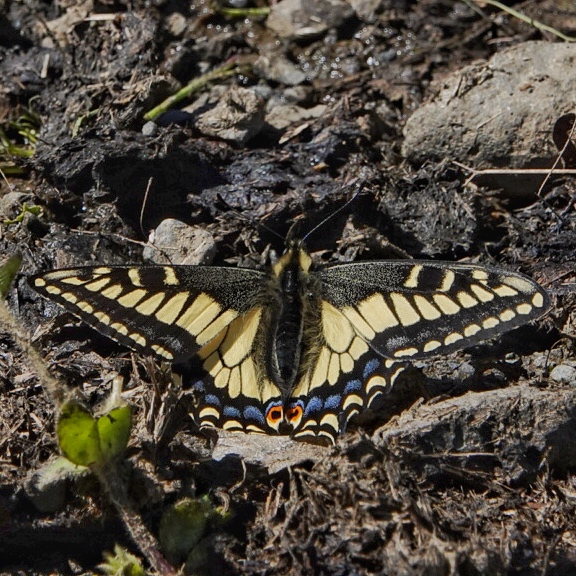
Like all swallowtail butterflies Papilio zelicaon is beautiful to look at and graceful in flight. They light up a landscape and bring it to life. They are also a very interesting lepidopteran with many unique qualities. For one thing they are one of only 2 swallowtails in our region to utilize the wildly abundant umbellifers in the parsley family (Apiaceae).
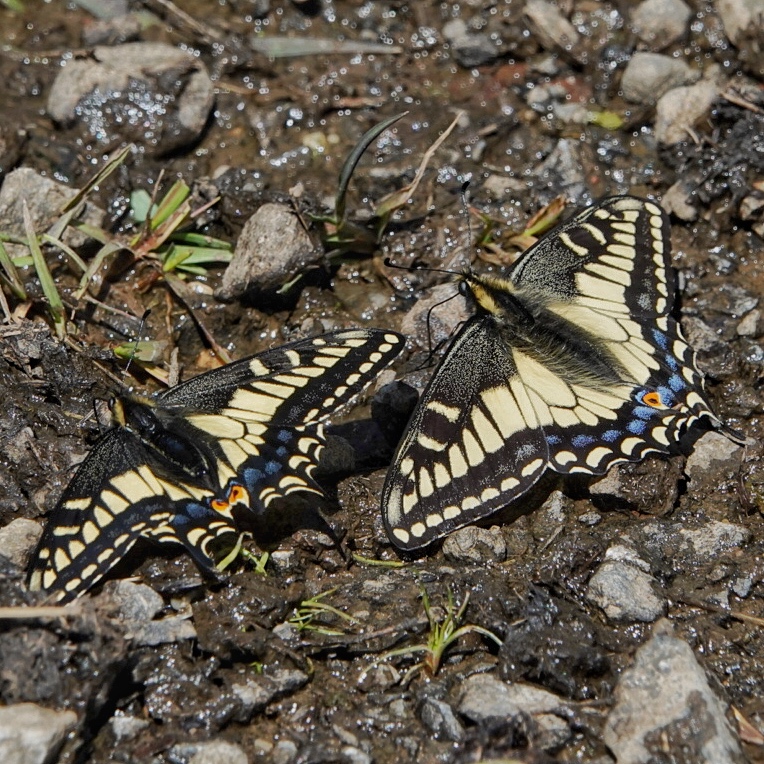
Another unusual trait is that they may be uni-, bi-, or even tri-voltine (1,2, or 3 broods per year). In the interior, with its hot dry summers and cold, often snowy winters, they are usually univoltine. Near the northern coast, with its milder weather and longer growing season, they are often bivoltine. And in parts of California, where the weather is mild for most of the year, and Sweet Fennel, Queen Anne’s Lace, Poison Hemlock, and other parsleys flourish well into the fall, they may have 3 broods.
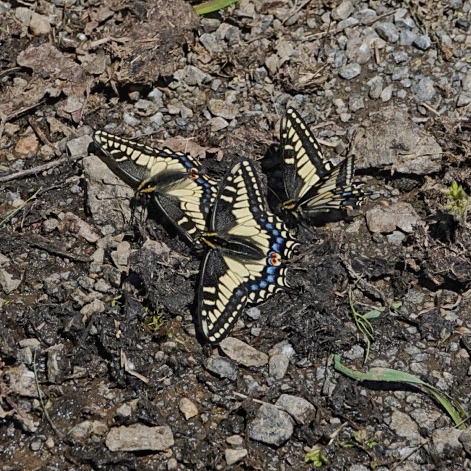
Anise Swallowtails also can somehow control how long they are in diapause during pupation, and it is not unusual for them to spend an entire year in their chrysalis. One was recorded as remaining pupal for 7 years, but laboratory studies showed 100% mortality in pupae that remained in diapause for 3 years. It is primarily univoltine populations that do so, though occasionally bivoltine populations also have some individuals that extend their diapause as a hedge against an early winter. Multivoltine populations, though they are capable of extended diapause, seldom do so.
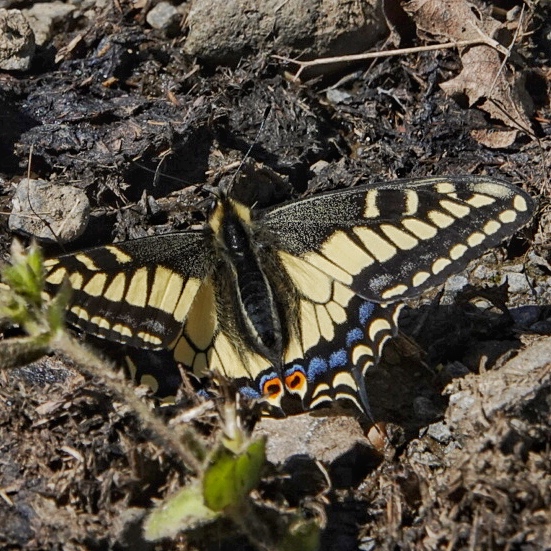
Extended pupal diapause can convey survival benefits to a population by ‘saving back’ individuals in case of environmental disasters that may wipe out most or all of a given population. And, since maintaining diapause is at least somewhat contingent on lower temperatures, a long cold spring that might not give a population time to breed, hatch, and grow larvae before either cold weather hits or food resources diminish, need not wipe out most of the population of a given area, if enough individuals simply stay in the pupal state until the following spring.
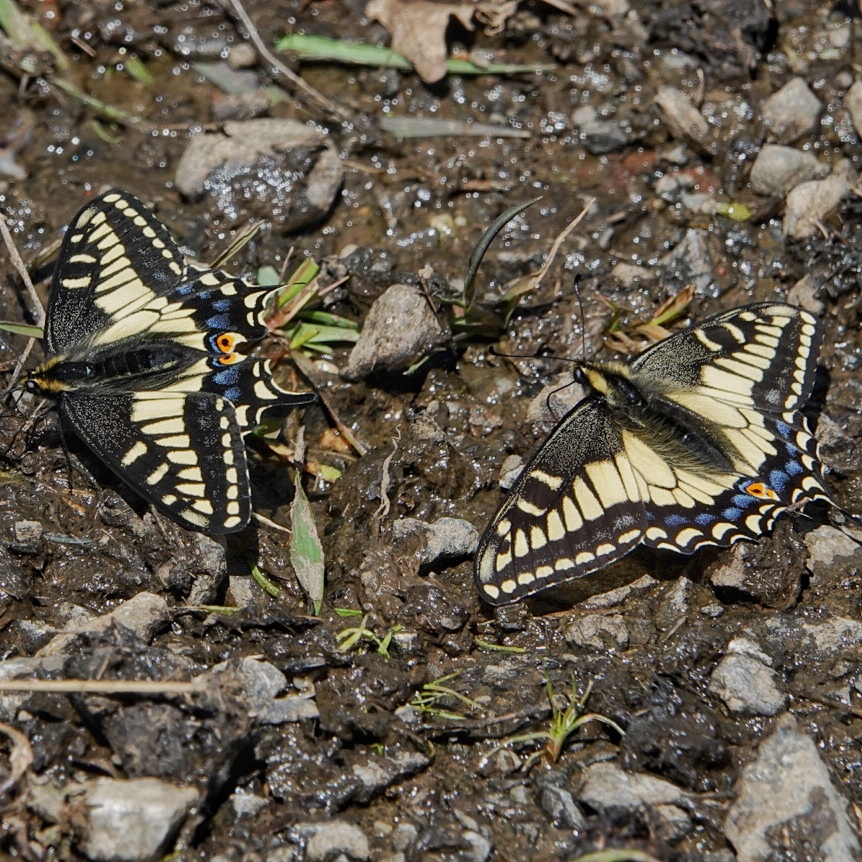
Like many other species of butterflies Papilio zelicaon males spend much of their adulthood flying around the tops of hills looking for females, an excercise that lepidopterists uncreatively call ‘hilltopping’. When the females are ready to breed they simply head uphill to find a multiplicity of suitors. Both males and females also engage in ‘puddling’ wherein they drink at mineral rich puddles and exposed shores of wetlands, extracting these nutrients to nourish eggs and sperm. They can sometimes be found on fecal matter for this same reason. And, of course, they can also be found consuming the energy rich nectar produced by flowers, while serving the flower by spreading its pollen to fertilize other flowers.
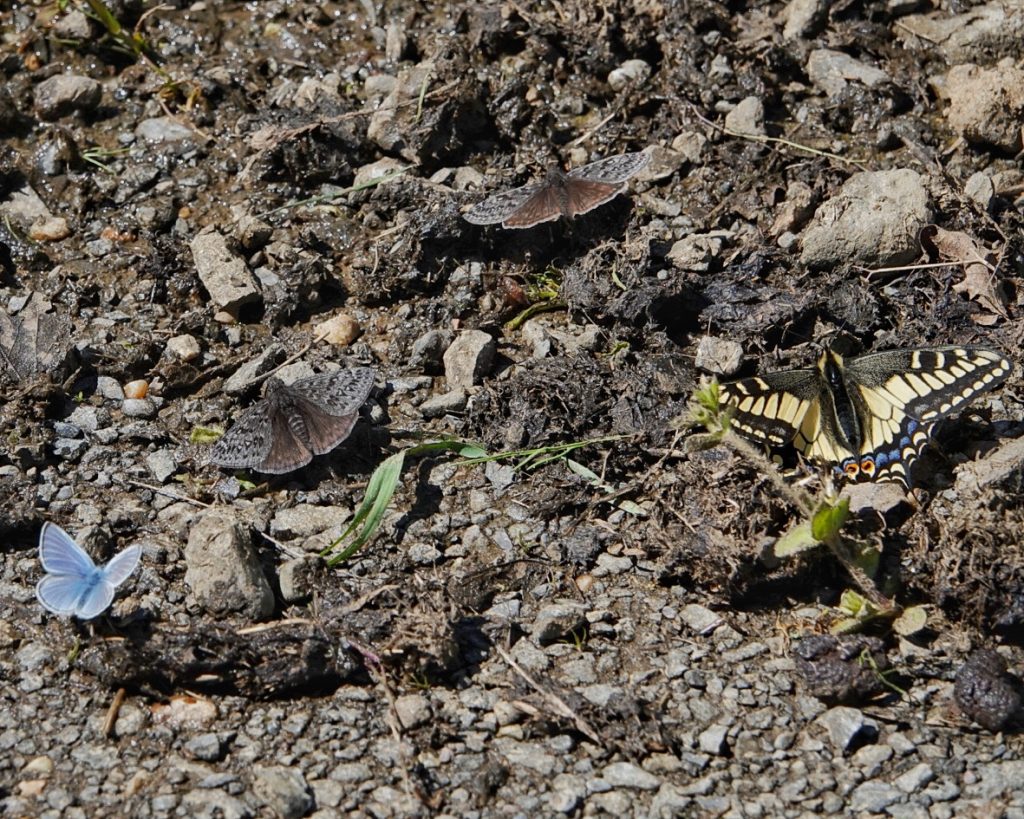
Description– Fairly large (wingspan 2.75-3.5) black and yellow swallowtail; dorsal forewing has extensive black with dots and dashes of yellow, at front and rear, blue dots in rear black sections, and a yellow field between the bands; dorsal hindwing has yellow near the body, and a black band with blue and yellow markings behind; orange eyespot on hindwing has a pupil that is more or less centered and doesn’t reach the edge of the orange; body is mostly black with a thin yellow line in the middle.
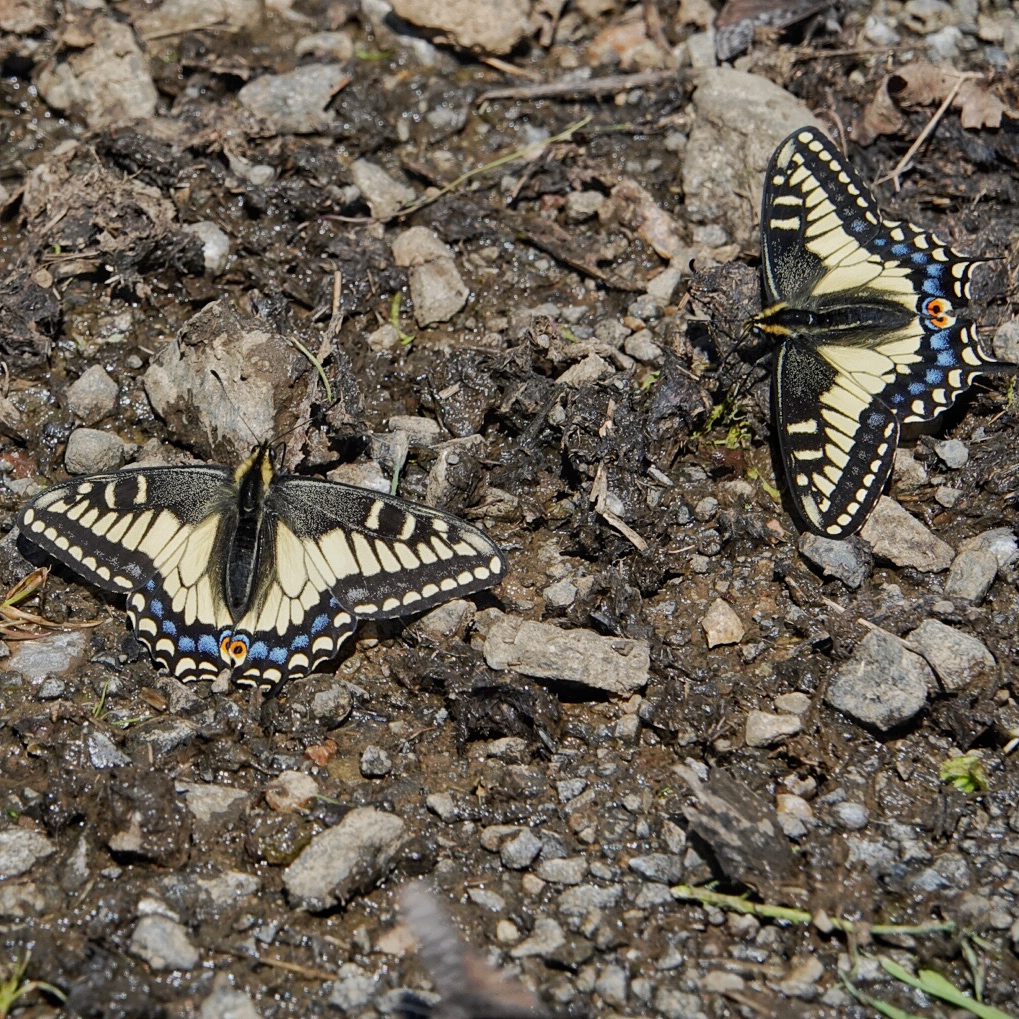
Similar species– In our region it is only likely to be confused with Papilio machaon oregonius (Oregon Swallowtail), which has a mostly yellow body below the wings, and the ‘pupil’ of the orange eyespot on the dorsal hindwing torches the posterior portion of the orange; all of our other swallowtails either have much more yellow or much more black on the dorsal side of the wings.
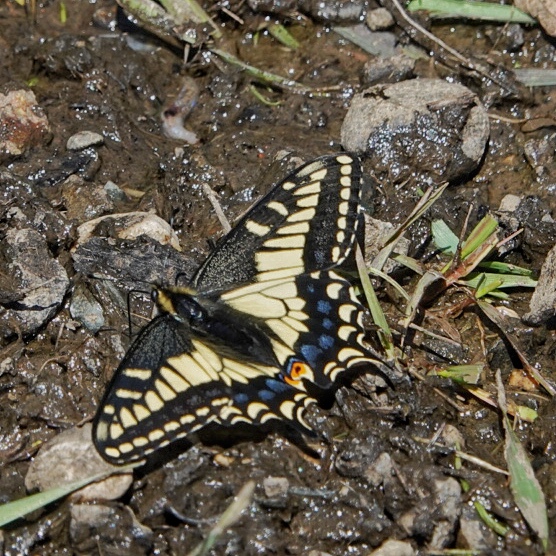
Habitat– They can be found anywhere there are parsleys (family Apiaceae)
Range-Western North America; region wide in the PNW.
Eats– In our region all of its larval host plants are in the family Apiaceae, and Anise Swallowtails primarily utilize Lomatium, Foeniculum, Heracleum, and Angelica spp., although Daucus carota (Queen Anne’s Lace) and Conium maculatum (Poison Hemlock) also get their share; in California they are known to utilize some plants in the family Rutaceae (citrus plants) but they do not do so in our region; adults nectar at a wide variety of flowers.
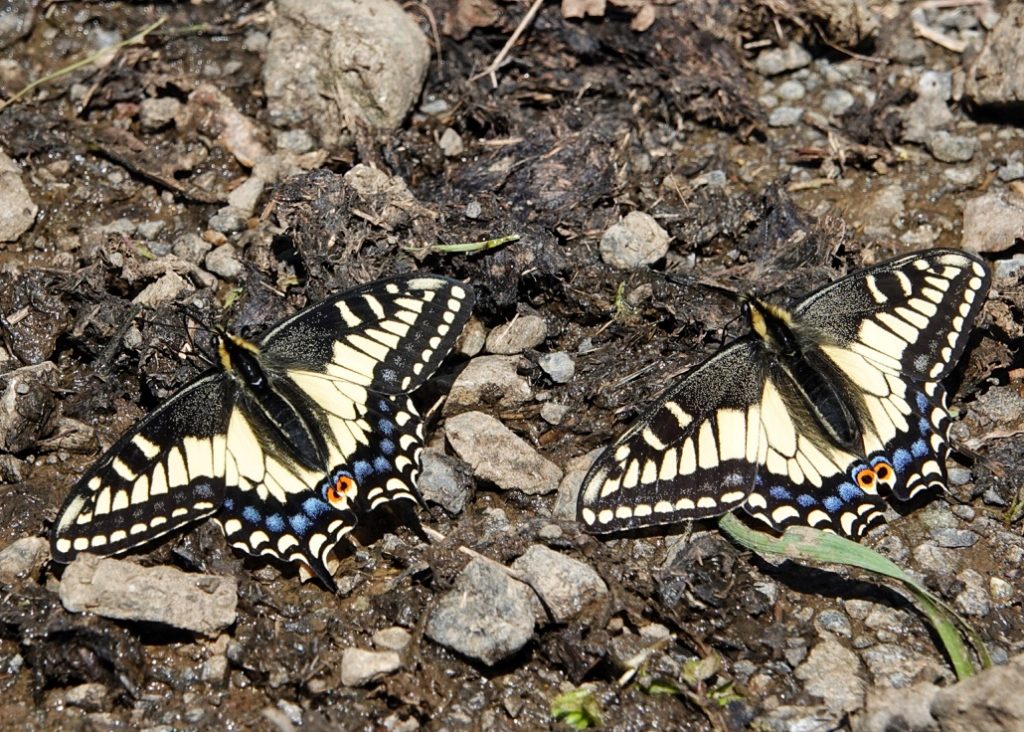
Reproduction-Single eggs are laid on the host plants; early instars eat leaves, later stages feed on flowers; overwinter as pupae; may be uni-, bi-, or even tri- voltine
Adults active-April to September
Etymology of names–Papilio is from the Latin for butterfly. The specific epithet zelicaon is from Latin and translates as ‘emulating chaon’, referring to the fact that it is very similar to Papilio machaon. The common name Anise Swallowtail refers to the species frequent use of anise (aka sweet fennel)(Foeniculum vulgare) as a larval host in the California populations from which Comstock described it.
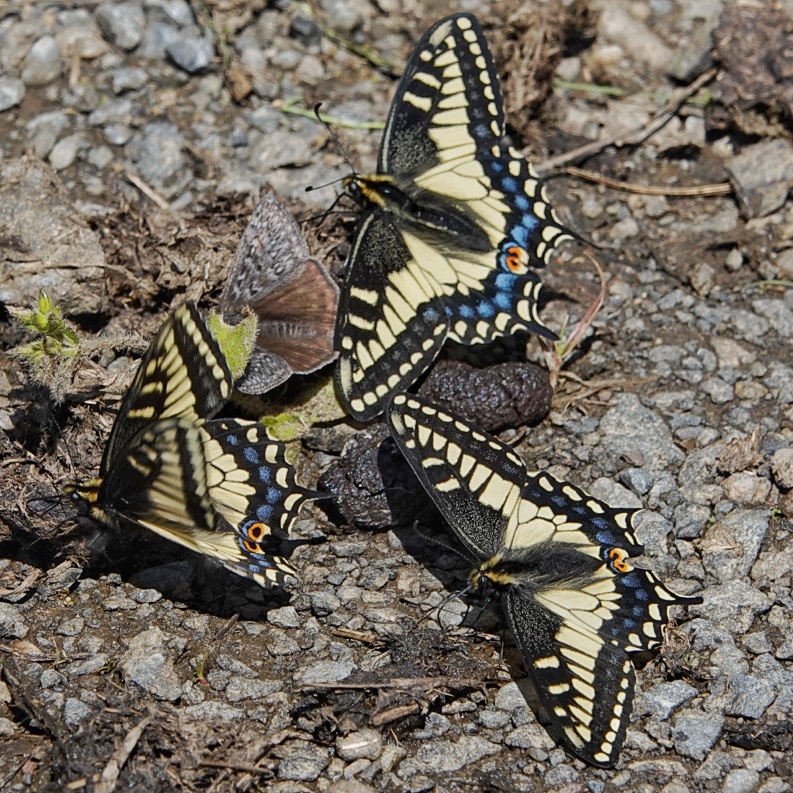
https://bugguide.net/node/view/28235
https://www.butterfliesandmoths.org/species/Papilio-zelicaon
https://butterfly.ucdavis.edu/butterfly/papilio/zelicaon
http://socalbutterflies.blogspot.com/2009/01/anise-swallowtail-butterfly.html?m=1
https://linnet.geog.ubc.ca/efauna/Atlas/Atlas.aspx?sciname=Papilio%20zelicaon
https://images.peabody.yale.edu/lepsoc/jls/1980s/1983/1983-37(1)29-Sims.pdf
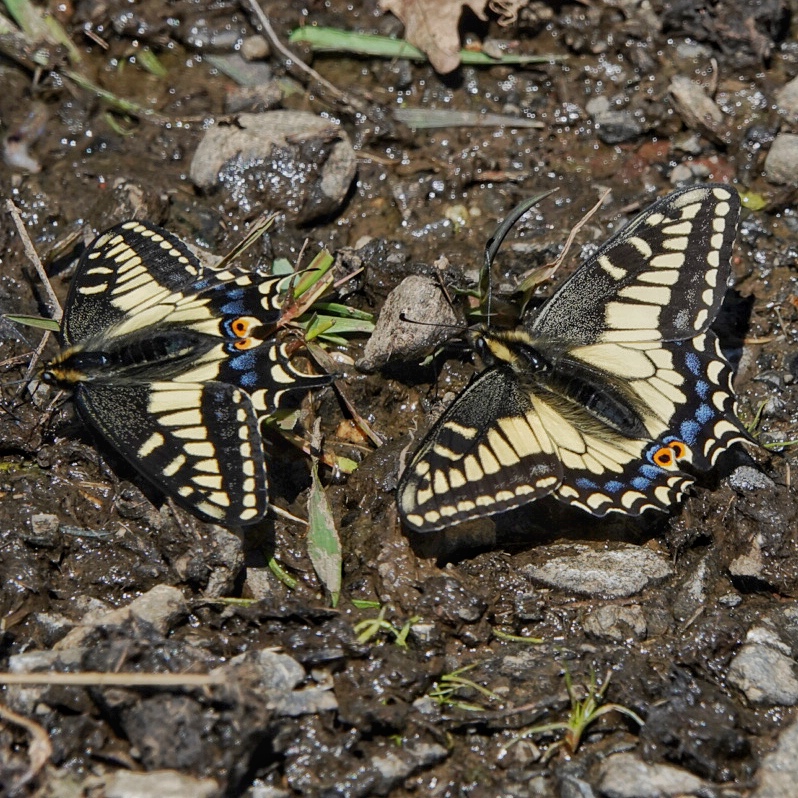
How beautiful! And so interesting having extended pupation as a survival technique.
I thought so too!